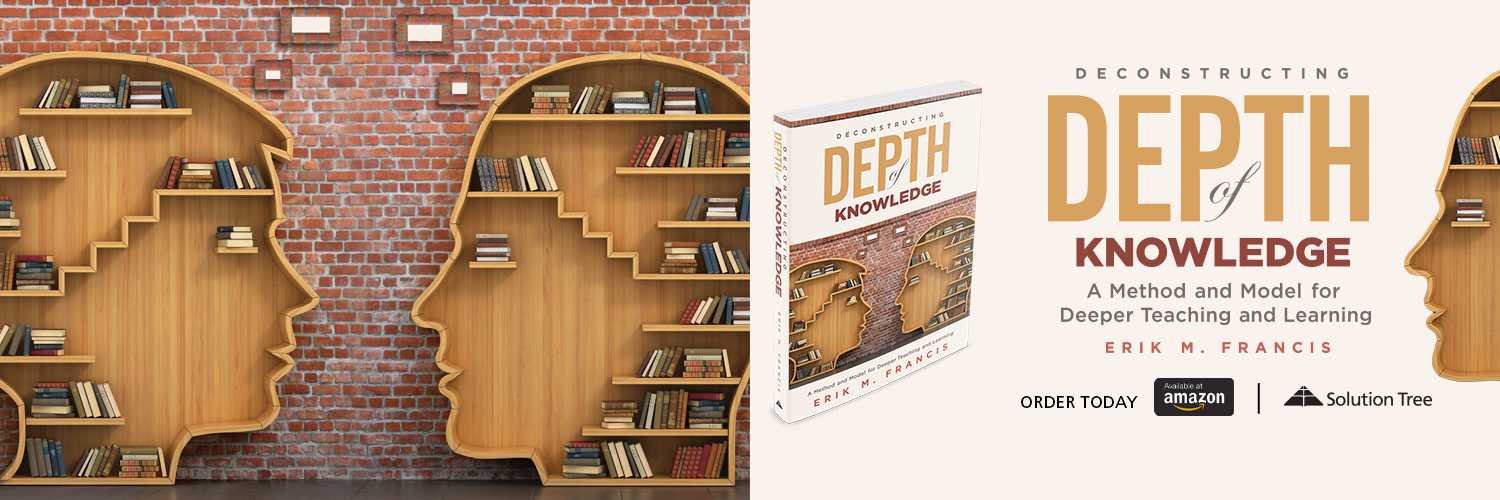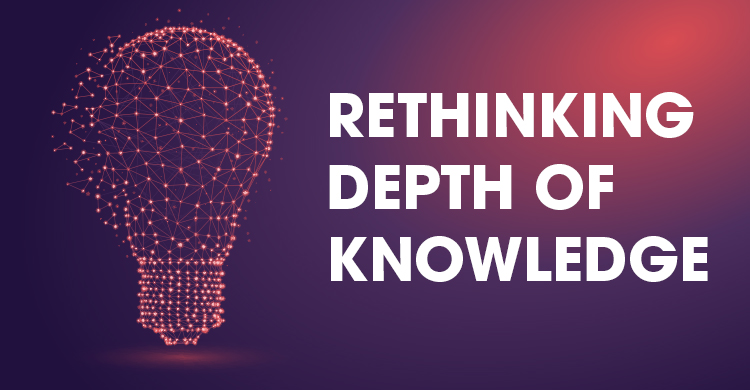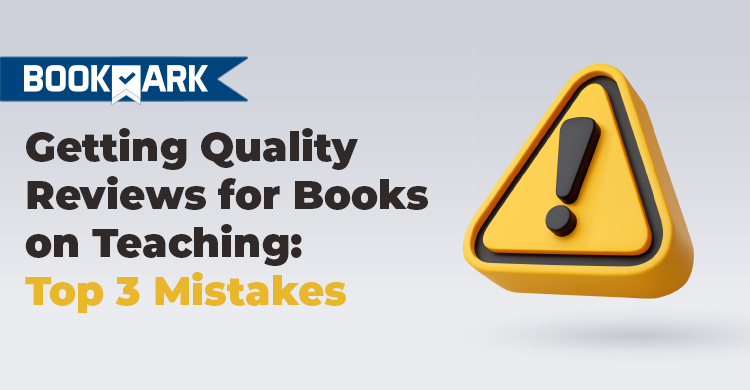Depth of Knowledge (DOK) continues to be a focus and priority in education—especially now as schools and staff strive to plan and provide teaching and learning experiences that are academically rigorous and effectively responsive. However, there is new information about DOK as a concept and framework that must cause us to not only rethink what exactly DOK is but also reconsider how it could be utilized accurately and appropriately in instruction, learning, and assessment.
However, before we can understand DOK, we need to understand what exactly rethinking involves and how it calls for reconsidering why we do how we do what we do.
How do you rethink something? What does it involve?
Mirriam-Webster categorizes “rethink” as a verb and provides two definitions. The first definition for a rethink is “to think about again.” The second definition is “to engage in reconsideration.” While both may sound similar, there is a distinct difference. The definition “to think about again” describes rethinking as an invitation, prompt, or suggestion to review what we know, understand, have been taught, or have learned. The definition “to engage in reconsideration” explains what rethinking involves: reflecting and reevaluating whether what we know, understand, or have been taught and learned is accurate, applicable, or appropriate.
In his book Think Again!, organizational psychologist and author Adam Grant delves deep into what rethinking involves and why it is essential to rethink. He explains how rethinking is both a skill set and a mindset. It’s the ability to question, analyze, and investigate our beliefs, knowledge, and opinions. It’s also an attitude or willingness to reconsider our beliefs, knowledge, and opinions in response to new data and information or shifting situations. He also acknowledges that rethinking is difficult and distressing because it causes us to reconsider whether our beliefs, knowledge, or opinions may be wrong.
Notice I said, “may be wrong”—not “is wrong” or “are wrong.” That’s also the core idea of rethinking. According to Grant (2021), rethinking “requires us to admit that the facts may have changed, that what was once right may now be wrong” (p. 4). The realization and response that we “may be wrong” is often more emotional than educational.
We associate “wrong” as something that’s “bad”—and no one wants to feel bad about themselves or have what they know, think, or feel to be right questioned or challenged. However, that’s what rethinking involves—the ability and attitude to review, reflect, and reconsider whether what we know, think, or feel is right and continues to be right. That’s the other key attribute of rethinking. Once upon a time, we may have been right. However, we must be willing to rethink whether we are still right in light of new data and information or changing circumstances and conditions.
Why rethinking and reconsidering Depth of Knowledge is important
We educators are not wrong about what we understand about Depth of Knowledge as a concept and framework. We also have not been teaching and learning DOK the wrong way. But our knowledge, thinking, and feelings about DOK are based on what we’ve been taught—and unfortunately, that’s what’s wrong.
However, there is new data and information about DOK. Recent research also shows how DOK could be used accurately and appropriately in instruction, learning, and assessment.
Helpful tips for using DOK in the classroom
Dr. Norman Webb—who created Depth of Knowledge—acknowledges that the concept and framework have evolved from a criterion for alignment to “a tool that allows educators to communicate effectively, consistently, and efficiently about the content complexity of standards, learning objectives, tasks, prompts, questions, etc.” (Webb, 2021, p. 1). He also explains how DOK “provides a common language that can be used to determine the degree to which the complexity of cognitive engagement, explicit in academic standards, is being translated into appropriate learning opportunities and assessment tasks” (Christopherson and Morelan, 2023).
In my book Deconstructing Depth of Knowledge: A Method and Model for Deeper Teaching and Learning, I present key phrases I call “DOK descriptors” that not only serve as that common language for communicating and confirming DOK levels (Francis, 2022) but also clarify the complexity of the task students must complete (DOK Task), the demand of the mental processing students must perform (DOK Skill), and the extent of the response students must provide (DOK Response). Teachers and test makers can use these DOK descriptors to make the goals and expectations of their curricular activities and assessment items much clearer and more concrete.
Webb (2021, 2023) emphasizes that the level of Depth of Knowledge demands is not based on the complexity of thinking students must demonstrate, as indicated by “the verb.” This has been a widespread misconception and misunderstanding of DOK for the past two decades—mostly due to inaccurate resources and visuals such as the DOK Wheel.
Common misconceptions about DOK and how to think differently
“To determine complexity,” Webb explains, “we need to look beyond the verb and consider the full scope of an expectation or task” (Christensen and Morelan, 2023). Webb has refuted the DOK Wheel, calling it “highly misleading” (Christensen and Morelan, 2023) because it attributes verbs to describe the complexity and demand of the DOK levels. Despite having his name featured in the citation of the DOK Wheel poster, Webb did not create it. He also neither endorses nor encourages its use when addressing and assessing DOK.
Dr. Karin Hess (2006, 2018) expanded on the practice of “looking beyond the verb” to determine cognitive complexity and demand. She superimposed Webb’s DOK levels with Bloom’s Revised Taxonomy in matrix form to measure the cognitive rigor of academic standards, curricular activities, and assessment items. To determine cognitive rigor, we first need to isolate and identify the type and level of the cognitive actions—or “verbs”—introduced and included in a learning intention, objective, or target. Then, we need to “look beyond the verb” to identify what students must learn and inform how deeply they must understand and use their learning.
Those words and phrases following “the verb” clarify and confirm the level of Depth of Knowledge demanded. Together, the level of thinking expected and the Depth of Knowledge demanded marks and measures the cognitive rigor of an academic standard, curricular activity, or assessment item. Hess (2023) also shows how DOK could be used to develop and design rigorous activities, items, and tasks that will address and assess student learning at different levels of complexity and demand.
Understanding DOK levels and the best ways to use them
Webb (2021, with Christensen and Morelan, 2023) clarifies that the DOK levels are not a taxonomy. They describe four different and deeper ways students must understand and use their learning. Teaching and learning don’t need to start at DOK 1 or DOK 2 for students to engage in a DOK 3 or DOK 4 experience. Also, according to Webb (2021), “DOK is not a value judgment and does not reflect importance” (p. 1). Teaching and learning at a DOK 3 or DOK 4 should not be considered “better” or “more desirable” than a DOK 1 and DOK 2. When teaching and learning for Depth of Knowledge, “[The] delivery and intensity of instruction depend on both the demand of the standard and the strengths of the student” (Francis, 2022, p. 122).
Using DOK in a MTSS
Hess (2018) describes the DOK levels as ceilings of assessment—“the highest potential Depth-of-Knowledge level to be assessed, as well as assessing DOK levels up to the ceiling” (p. 614). I turned the DOK levels into a multitiered system of support (MTSS) for delivering instruction, responding to intervention (RTI), and extending or enriching student learning (Francis, 2022). Teaching and learning for Depth of Knowledge starts at the DOK level demanded by the standard. The teacher tiers instruction to the DOK level where students are. The teacher then builds upon students’ strengths so they can rise to, reach, and go beyond the DOK level—or “DOK Bar”—set by the standard.
Recently, I have been utilizing DOK as a method, model, and mindset to address and assess student learning loss not only caused by the pandemic but also due to other disruptions and interruptions in student learning and life experiences. This has made teaching and learning for DOK standards driven, socially and emotionally supportive, and responsive to student needs.

Interested in learning more about DOK levels and how they work? Check out our free reproducibles from Erik M. Francis’s Deconstructing Depth of Knowledge.
What you need to do to reconsider Depth of Knowledge
Rethinking and reconsidering DOK is not daunting or difficult. In fact, you’ve taken the first step. You’ve been provided with new data and information to review. You’ve also been presented with the changing circumstances and conditions to reflect on and reconsider. The next step depends on you.
Are you ready to rethink Depth of Knowledge as a concept and framework?
Are you ready to reconsider Depth of Knowledge?
I hope you are, and I hope you will. Our students need us educators to rethink. The question is whether you are willing or want to reconsider why we do how we do what we do.
About the author
Erik M. Francis is an international author, educator, and presenter. He provides professional development on how to plan and provide engaging teaching and learning experiences that are academically rigorous, socially and emotionally supportive, standards-based, and student responsive.
If you’re interested in learning more about Erik’s work and the Depth of Knowledge method and model for deeper teaching and learning, check out his incredible white paper on the subject or view this insightful webinar recording where Erik goes over how to use DOK to plan and provide teaching and learning experiences that are standards based, socially and emotionally supportive, and student responsive.
For a full list of references used in this blog, click here.






